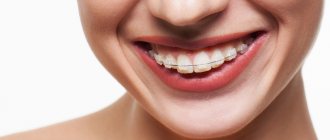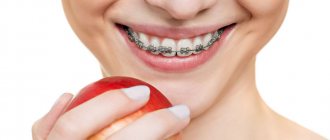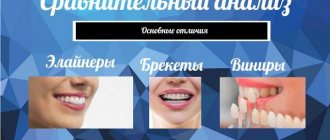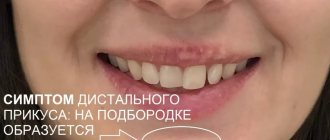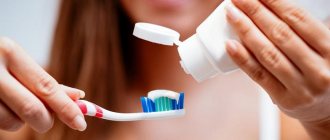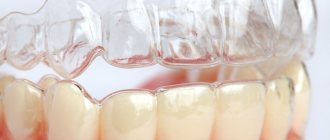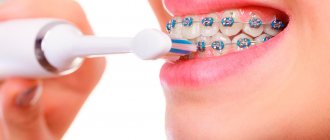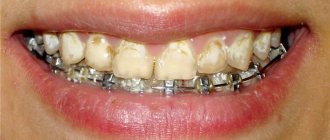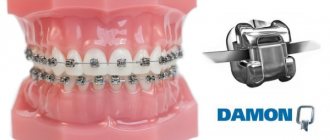A malocclusion is not only an aesthetic problem that makes a smile seem less attractive. This is also a whole range of potential pathologies and anomalies, starting with speech defects and ending with dysfunction of the temporomandibular joint. And in situations where the problem is complemented by several teeth that stand out from the general structure of the jaw row, medical intervention becomes an inevitable necessity.
However, proven techniques used in dentistry - or more precisely, in orthodontics - make it possible to correct identified anomalies and deviations without resorting to surgical operations. Installing braces, of course, is associated with certain inconveniences, but the final result fully justifies all the efforts made. The structural element through which directed pressure is created, restoring the aesthetics and functionality of the jaw area, is a power arc.
Which braces are better to install?
A braces system is a product that is placed on teeth to correct their position. .
Indications for installation
The design is necessary if the following pathologies exist:
- A large gap between the teeth due to different widths of the molars.
- Malocclusion.
- Curvature and crowding.
- Chewing dysfunction.
- Strong development of one jaw in relation to the other.
- Close proximity of molars to each other.
- Dissatisfaction with the shape of the jaw.
- Anomalies of the entire row or several units.
Types of braces
Products are classified according to various factors. The method of treating a bite can be self-ligating or conventional .
Ligature devices consist of large ospreys, arcs, and elastic bands. The ligatures are changed monthly and the tension force is adjusted.
Self-ligating ones are distinguished by the presence of a fastening lock in the composition. Due to the fastening of the arc on the plate, it becomes possible to independently regulate the pressure without visiting the clinic.
The method of fixation on the teeth can be vestibular (fastening on the outer surface of the enamel) and lingual (fastening on the inside). It is quite difficult for patients to decide what is best to choose, so you need to familiarize yourself with the main characteristics of the designs:
| External | Domestic | |
| Effect on enamel | With insufficient care, there is a risk of initial caries, because... spots of demineralization appear | Low risk due to simple care |
| Comfort | Rub the soft tissues of the lips and cheeks | Rub your tongue |
| Price | Cheaper | Expensive |
| addictive | 1-2 weeks | About a month |
| Effect on diction | Absent | Sound pronunciation changes |
The material of the devices is divided into:
- ceramic,
- sapphire,
- iron.
It is impossible to choose the right model yourself. The choice depends on the condition of the dentition, periodontal tissues, the existing problem, and the financial capabilities of the patient. To determine the required type of structure, it is recommended to seek a free consultation at the Consilium-Dent clinic.
Indications for replacement
The gradual restoration of shape leads to a weakening of the pressure exerted on the maxillary arch. In the case of a planned replacement, the procedure is designed to maintain directional traction, under the influence of which the problematic units continue to move into their natural anatomical position. In some brace designs, the wire tension is changed using a screw element, but each arch has a limit, which is not always enough to complete the correction cycle.
In situations where replacement is caused by the occurrence of mechanical defects that preclude the possibility of further operation of the structure, it is impossible to postpone a visit to the doctor until the next scheduled date - otherwise the entire correction cycle will have to start over again. Such cases are extremely rare - today high-strength materials are used to make braces, the likelihood of breakage of which is minimized.
What braces should I put on an adult?
For people over 30 years of age, the doctor selects an orthodontic device taking into account aesthetic requirements, functionality and cost. Since skeletal growth has already stopped, making the right choice is more difficult.
If you want to correct the position of your teeth as an adult, you should choose non-ligature products. It is better to choose ceramic, silicone or sapphire models because they are similar to the color of natural enamel. Silicone aligners are placed when there is a slight change in the bite.
Based on the installation method, people over 30 years of age choose a hidden mount. Lingual appliances are attached to the inside of the teeth. They are visually invisible, do not interfere with diction, and do not injure the mucous membrane. This fact is an advantage, because the treatment period in adults increases by 6-12 months, and most adults are embarrassed to wear the structure. Often the material is selected based on price. Prices for metal structures for one jaw start from 30 thousand. Sapphire and ceramic models are more expensive. Their prices are 50 thousand and 40 thousand respectively.
Principle of operation
Immediately after braces are installed, they begin to put pressure on the teeth, gradually causing them to move. During this, the ligaments that are located around the unit are strained. As a result, the human body tries to compensate for the lack of tissue in the place where the fibers have been greatly stretched, and vice versa.
Where the fibers are strongly compressed, the tissues begin to gradually dissolve, freeing up space for the movement of adjacent teeth. The main advantage of using braces is that the results obtained, if all the specialist’s recommendations are followed, remain with the person for life.
The teeth begin to shift not because the brackets are attached to them, but due to the pressure of the metal power arc that connects them together. To maximize the effect of treatment, the arch should be changed periodically. This is due to the fact that over time the force of its pressure weakens. Also, at one of the regular preventive examinations, a specialist may come to the conclusion that it is necessary to install a more rigid arch.
What braces should I give my child?
Children are often given metal ligature structures. The staples are painted in different colors, which is especially popular with kids. The advantage is that the devices can be adjusted to suit the growing jaw. In addition, metal models are the cheapest, metal correction is simpler and more profitable.
Ceramics require careful daily hygiene; such products are expensive, so they are not suitable for small children.
At what age should a child get braces?
Correction of the dentition with orthodontic devices is possible from the age of 10, when baby teeth are replaced by permanent teeth and the tissues are completely strengthened . However, many children in this period have not yet formed the dentofacial apparatus. Therefore, treatment is recommended after twelve years of age. Until this age, unstrengthened roots may not withstand the load. Until the jaw has formed and four molars have grown in, specialists correct the defects with removable plates.
At what age should a girl get braces?
If any pathologies of the dentition are noticed, it is worth installing the device immediately after the formation of the incisors and their roots. Of course, there are no age restrictions for installation . The optimal age is 11-13 years. During this period, one year is enough to eliminate anomalies. In adolescence and adulthood, girls face such difficulties as slow metabolism, cessation of jaw growth, and slow tissue regeneration. These factors increase the duration of wearing the structure to three years.
What braces should I get for a teenager?
Adolescents aged 12-16 years are fitted with non-ligature orthodontic appliances with enamel protection . This makes it easier to maintain oral hygiene. In order not to provoke any complexes, teenagers choose ceramic models. They are less noticeable on the enamel surface.
The choice of system is influenced by the following factors:
- insufficient oral care. In this case, you need to give preference to metal.
- reluctance to diet. It is also worth choosing metal.
What can and cannot be eaten with braces?
This question worries every person undergoing or planning orthodontic treatment. In fact, only a small list of products are completely banned:
- Viscous and hard candies : toffees, nougat and so on. They can easily cause the braces to come off; in addition, the pieces get stuck in the equipment and are extremely difficult to remove.
- All types of nuts : there is a high probability of braces coming off with any careless movement.
- Chewing gum : gets stuck under the archwire and around the braces. Often the cause of peeling off.
- Rusks, dryers, hard cookies and gingerbreads, biscuits and other hard types of flour products
- Popcorn
- Bones (unexpected, isn't it?)
In addition, you should be very careful with the following products (it is very difficult to clean residues from the braces system):
- Processed cheese
- Corn on the cob
- Bread and other soft flour products
- Chips
- Dried fruits
- Jerky
The following products can and should be eaten. But cut into small pieces (about 1 cm in diameter), since when biting off solid food there is an extremely high risk of braces coming off!
- Grilled meat
- Raw vegetables (carrots, cucumbers and others)
- Hard fruits (apples, pears, etc.)
- Sandwiches and burgers
- Pizza
- Hard breads
Which sapphire braces are better?
Sapphire staples have an attractive appearance. Various manufacturers offer a variety of crystal products.
Brand "Inspire ICE"
The system has a large number of advantages, including the transparency of the material, the ability to withstand heavy loads, no color change, minimal wire friction, the removal process does not cause discomfort, and the enamel is not injured. There is only one minus - the increased fragility of the products.
Brand "Damon Clear"
Braces can be placed on molars with little space. They differ from other models by the absence of ligatures. The arc is held in place by a latch. There are many advantages. For example, hassle-free hygiene care. The number of trips to the dentist is decreasing. The model is installed regardless of age. The periodontal condition is improving.
Brand "Miso"
The peculiarity is transparency. This is achieved due to the fact that the products are made from single crystal sapphire. They are distinguished by their reliability, easy removal procedure, compact size, and rounded shape. You can choose any shade to match the color of the enamel, and the patient will be confident in its resistance to staining.
Brand "American Orthodontics"
The most common model. The difference is the small size and area of adhesion to the enamel.
To make a choice, you need to weigh the pros and cons:
| Advantages | Flaws |
| The system is invisible | Brittle material |
| No plaque on the surface | Expensive design |
| The product sparkles when you smile | Wearing period increased to 2 years |
| The adaptation process takes two to three weeks | |
| There is no risk of developing allergies | |
| The staples are easy to care for | |
| Does not cause discomfort due to elasticity | |
| Yellowness does not appear over time |
What to do if your teeth hurt after correction
The situation when teeth hurt after braces are tightened is quite understandable. Installation and correction of the product leads to the fact that the teeth begin to move, ending up in a new, unusual position, which provokes discomfort and pain. The intensity of unpleasant sensations is influenced by the following factors:
- complexity of the orthodontic problem;
- quality of the selected bracket system;
- characteristics of a person’s pain threshold;
- qualifications and experience of an orthodontist.
Each time, after tightening the structure, the teeth will react less and less - the closer the end of the treatment, the less discomfort we will feel.
Important!
The first corrections may be accompanied by intense sensations during the day after the procedure, but if the pain lasts longer and cannot be tolerated without analgesics, you need to inform your doctor. Also, do not hesitate to visit the orthodontist again if the wire of the system has moved and can be felt in the gums or tongue.
How to reduce pain - expert advice:
- Before tightening the structure, you need to make adjustments to your usual diet: the basis of nutrition for the next 2 to 3 days should be soft food: cereals, purees, yoghurts.
- Avoid acidic foods and drinks - acid can increase discomfort by causing irritation of the mucous membranes.
- Discuss with your doctor the possibility of taking painkillers such as Diclofenac, Mig, Nurofen.
- Apply local anesthetics in the form of mouthwashes or special gel formulations, for example, Orajel or Colgate Orabase.
Which metal braces are better?
The most popular types used in dentistry:
Brand "Ormco"
They are distinguished by their strong attachment to the teeth and the reliability of the device. The grooves are made in the shape of a rhombus. The arches distribute the load evenly.
Brand "Victory"
The peculiarity is the possibility of coloring the ligatures, as well as the reduced size. It is often given to children because it is affordable.
Brand "Sprint"
It is chosen by people with hypersensitivity and allergic reactions. An alloy of several types of metal makes the structure more durable. Due to this, the movement process of each cutter is controlled.
Menu during orthodontic treatment
After reading the list of restrictions above, you are no doubt wondering, “So what can braces bearers eat?” In fact, the list of dishes is very large, you just need to show a little imagination and follow the recommendations above. I will list only a small part of the recommended dishes so that you can get new ideas for culinary experiments during orthodontic treatment.
- Pasta, spaghetti, ravioli and so on . With cheese, various sauces and other additives there is a huge scope for creativity.
- Mashed potatoes or soft baked potatoes
- Many rice dishes with vegetables or seafood
- Various types of cutlets and dishes using minced meat
- Dumplings and dumplings
- All types of cereals
- Pies and similar baked goods (without a hard crust) with almost any variety of fillings, except nut
- Various seafood dishes (not hard)
- Various types of cheeses
- Dishes made from jelly or creams
- Smoothies and milkshakes
- Yogurts and cottage cheese with various additives
- Bananas, grapes, melons, watermelons, kiwis, strawberries and other soft fruits and berries
The above dishes are especially suitable for the beginning of treatment (especially in the first couple of weeks after bonding), when the teeth may become sore when biting on them. In the future, you can add more solid products from the second list (necessarily, cutting into small pieces). So, the menu of brace bearers cannot be called a diet. In fact, this is a complete diet, with some features and restrictions on the hardness and texture of food.
Which ceramic braces are better?
Several models from different companies are used in this work. All have different characteristics.
Brand "Damon"
The manufacturer produces non-ligature types based on a clip, which is an advantage. The design does not oxidize and does not change color. Braces reduce wearing time.
Brand "Clarity"
It does not shimmer or shine in the sun, so the system is invisible in the oral cavity. The color does not stand out from the natural shade of the enamel, making the product less noticeable. Ceramics do not irritate the mucous membrane. It is also hypoallergenic. Small locks are not felt.
At what age is it better to get braces?
There is no time frame for fitting orthodontic appliances. Dentists recommend correcting abnormal growth problems as early as possible to reduce the length of time you wear braces. At a more mature age, the process of straightening molars drags on for up to five years.
Expert answers
To decide which braces are best to choose in a given situation, you need to consult a doctor. Here are the most popular questions and answers on the topic of choosing an orthodontic appliance. Answered by a dentist with extensive experience.
I don’t know which system to choose – ceramic or sapphire. How to make a choice?
If it’s just a matter of aesthetics, then you should give preference to ceramics, since sapphire types emphasize yellowness due to transparency. However, it is worth remembering that if you are a coffee lover, then ceramics are not suitable for you.
How to decide which braces to choose – sapphire or metal?
In this matter, you need to start from the neglect of the case. If the pathology is serious, the dentition is very crowded, then metal braces need to be installed. They apply more pressure. The situation will improve within a year. In other cases, you can choose sapphire types.
Doctor, tell us in what cases are ceramic or metal types used?
Metal and ceramic systems differ in price. This is a significant factor in the choice for most patients. Metal is much cheaper. It is installed for serious dental pathologies. Such products move displaced units faster. Treatment with ceramic braces lasts longer. They are placed when one or two teeth fall out of a row. Comparing the two types, ceramics wins due to the fact that it does not leave stains on the enamel.
What is the difference between ligature and non-ligature systems?
Ligature and self-ligating types differ in the method of attachment. In the first models, the orthodontic arch is secured with special rubber bands or medical wire. Non-ligatures are secured with locks.
Which braces to choose to correct malocclusion of the front teeth - lingual or regular?
You need to start from the price. Costs vary significantly. Internal brackets are more expensive due to the complexity of the installation work. The second factor is getting used to a foreign body in the mouth. It takes 3-4 weeks to get used to lingual types. In addition, diction changes during this period. The treatment period is the same.
In terms of price-quality ratio, should you choose iron or ceramic products?
The cost of metal devices is much lower, the structure is stronger and more reliable. Ceramics are more expensive, but are not as conspicuous as iron, but they are more fragile. The choice is up to the patient. It is difficult to say which braces are better.
Doctor, please advise which braces are best for a 12 year old child?
Without familiarizing yourself with the situation, it is difficult to answer the question. It is necessary to take into account the degree of occlusion, pressure on surrounding tissues, friction against opposing units, etc.
To thoroughly clean your mouth, you will need:
- A toothbrush with a depression in the center of the bristles. It allows you to clean the outside of the braces while cleaning your tooth enamel.
- A very soft and preferably narrow brush for cleaning the area near the gums. The smaller the bristles, the better, as they will be more flexible and mobile.
- Dental brushes for cleaning the pads of brackets, as well as the areas between teeth. The size of the brushes should be selected by your orthodontist. They must match the size of the staples.
You can also use dental floss and mouthwash for additional care. There are no special requirements for the selection of paste and rinse aid. Braces systems are not sensitive to their effects. The only thing is that the doctor may prescribe you a special paste if there are any associated problems with your gums or teeth. You should also visit your dentist regularly for professional cleanings. But, as a rule, this procedure coincides with the procedure for tightening the staples, so there is no need to make an additional appointment with a doctor.
It is very important to clean the brace system after every meal, so you should always have at least a minimal cleaning kit with you - a brush or irrigator. You can also carry a small bottle of mouthwash with you. It is desirable that it contains fluorine. Various herbal decoctions are also suitable for home disinfection of the oral cavity after eating. Most often, decoctions of chamomile, calendula or oak bark are recommended. They have an antiseptic effect, heal possible microcracks, and also improve the condition of the gums.
